The Mission
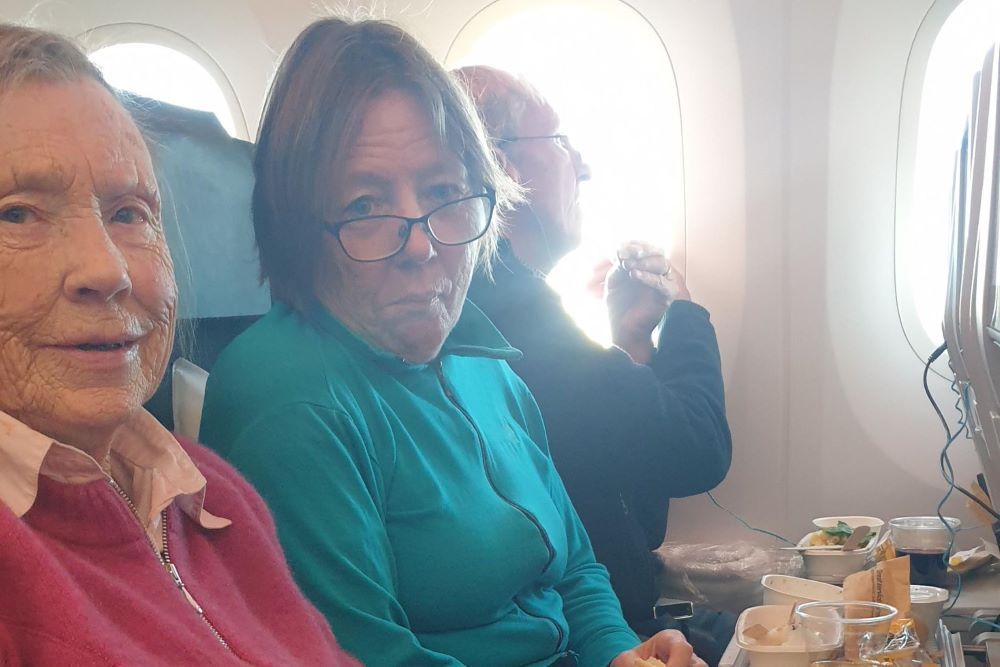
In May 2023 we set off as a family to relive past glories or, more accurately, to revisit past haunts. Who says nostalgia is not what it used to be? Between 1968 and 1971 our family — my mother Rosemary, father Bruce, brother Doug and sisters Anne and Mary — had lived in Tokyo due to my father’s work. This stay had left an indelible impression on all of us, connecting us to that country in perpetuity to varying degrees.
1968. Jimi Hendrix and Janis Joplin were still alive; the Beatles still together; Holyoake was Prime Minister; Martin Luther King assassinated and Nixon elected. Different times. Maybe not.
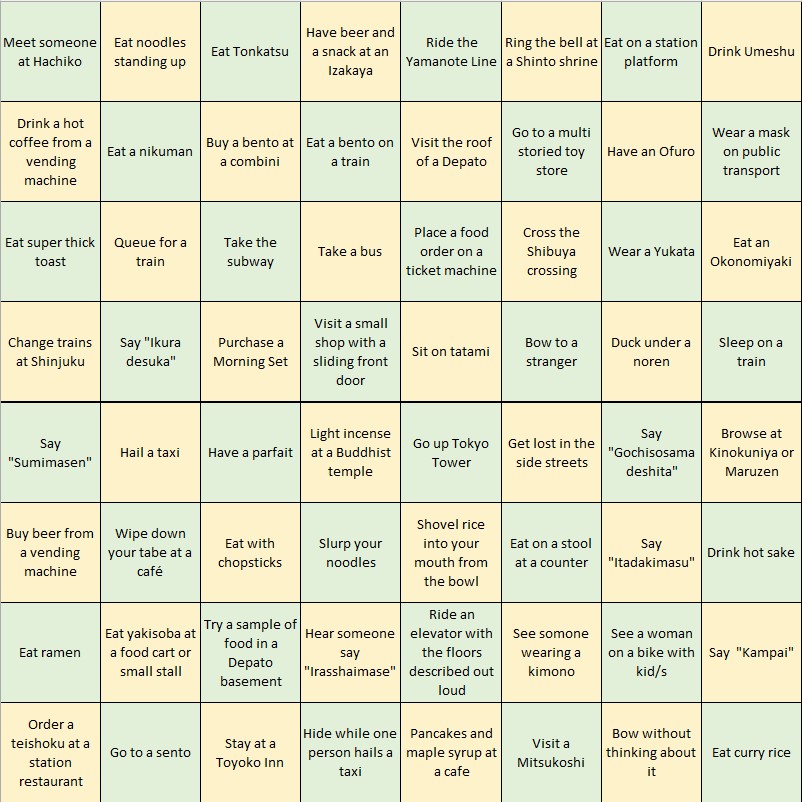
🔎click to enlarge
For Rosemary, her connection to Japan lead to the learning of Japanese and then to the study of the Japanese natural philosopher Miura Baien (梅園三浦). This, in turn, lead her to embark on many trips to Japan and, in due course, a doctorate with one of Baien's works as her subject.
By 2023 it had been 55 years since we had first arrived as a family in Tokyo, and an opportunity arose for all of us to return together. It was also an opportunity for Rosemary to introduce us to the Baien community and to visit Baien's birthplace near Kunasaki on the island of Kyushu.
Our father having died almost twenty years prior, it was Rosemary, us four children, Gabrielle, Doug’s wife, and Rick, Mary’s partner, who set off in the climatic sweet-spot of late May, after the cherry blossoms, tourists and Golden Week, but before the heat and rain, to visit Japan. Thanks must go to Mary who painstakingly organised the itineary and accommodation.
What is life, other than a game with uncertain rules, and so it was in this spirit of gamesmanship that a Bingo card (above) was created for our trip. The card listed 64 experiences and was distributed to all with a view to inciting fierce competition (or was that just me? Yes. Geoff. It was just you) and to leave no cultural activity unexperienced.
Tokyo

When we were kids in Tokyo, our school was closed on occassion due to the elevated pollution levels. Things have improved since then, but, fortunately, not completely and so we were treated to a fine sunset on our drive to our hotel from Narita airport. We checked in and prepared for the following days which were to be a combination of a group nostalgia tour and separate excursions involving various combinations of our party.
One of the essential pilgrimages was a trip to Shibuya Station and the statue of Hachiko 🎥 **. Shibuya was the part of Tokyo we lived in during the 1970s, the station a short walk from home. A walk we took often as we did not have a car, an accessory completely unnecessary in 1970s Tokyo, or 2020s Tokyo for that matter. Hachiko now comes with a queue for a photo op, but it still functions as a meeting point, just as back in the day.
**🎥 click for video
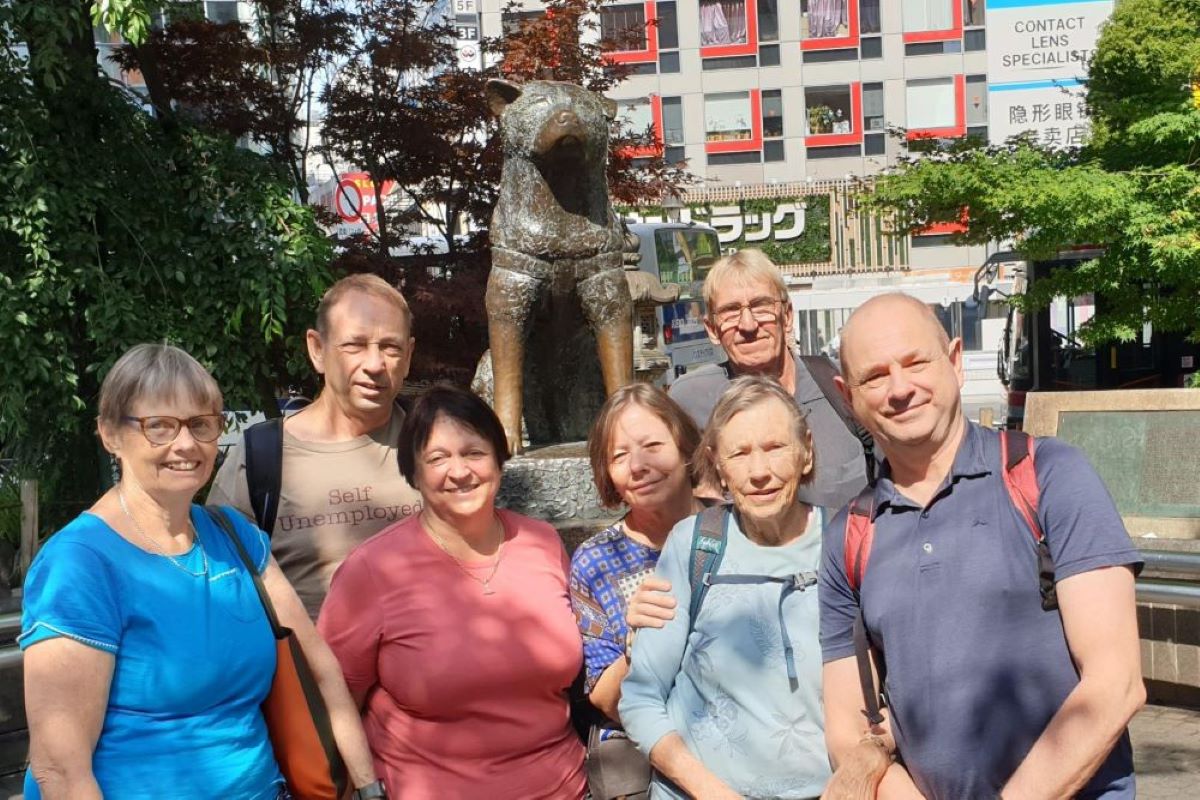
Next was a stroll up Dōgenzaka until we came to the Naganuma School. 🎥 This is the language school where Rosemary studied Japanese every day while us children went to school, returning to continue her studies even after we had moved back to New Zealand.
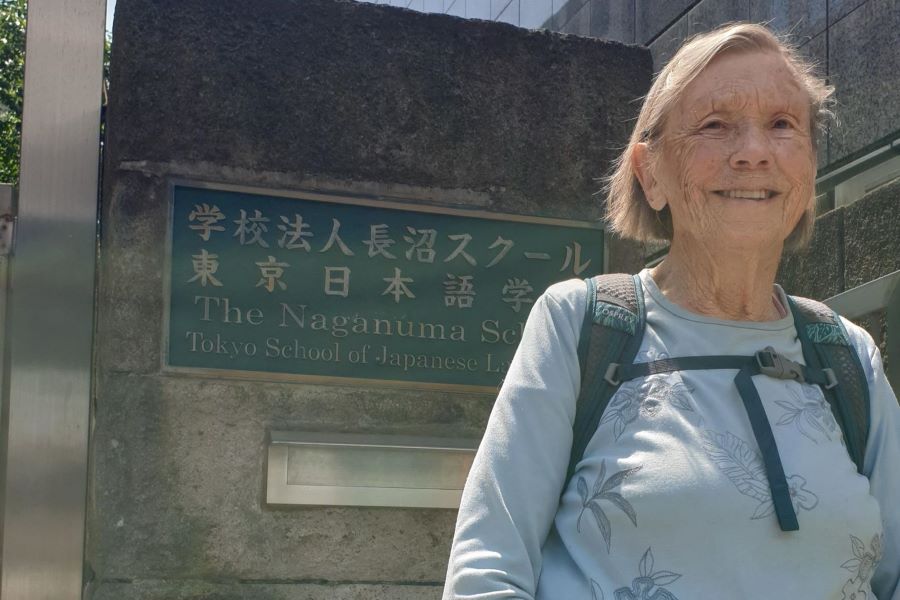
It wasn't a school day and so we moved on from Naganuma to revisit our old house, or at least where the house had been, now replaced by some townhouses. 🎥 Even in 1968, houses were not that common in central Tokyo, with most people living in apartment buildings. As typical in Tokyo, the main road was wide and noisy with an equally wide and noisy expressway atop it, but as soon as we turned off the main thoroughfare, the street narrowed, the footpaths disappeared and the noise dissipated. Because of their size, probably reinforced by Japanese norms of public behaviour, the backstreets of Tokyo are still as calm and quiet now as they were fifty five years ago, only disturbed perhaps on a winter's evening, by the cry of the hot sweet potato vendor.
Our house had a small garden and a garage that we used to house a ping pong table. It was two stories and had a roof that could be accessed, when the adults weren't home, through the windows of any of the bedrooms.
After lingering outside the old house site for a while, we wandered off down the old route back to Shibuya Station. Another thing in Tokyo that has not changed so much is the safety of the streets, a safety that gave us much freedom as children. Even though I was only around ten years old, I cannot remember once being afraid or concerned when I found myself alone. This was the case if I was in backstreets or among the throng at a festival. There was always a plan and a meeting place just in case. It may be the mists of nostalgia causing such romanticism, but equally my recollection of the safety and the freedom it provided may be true.
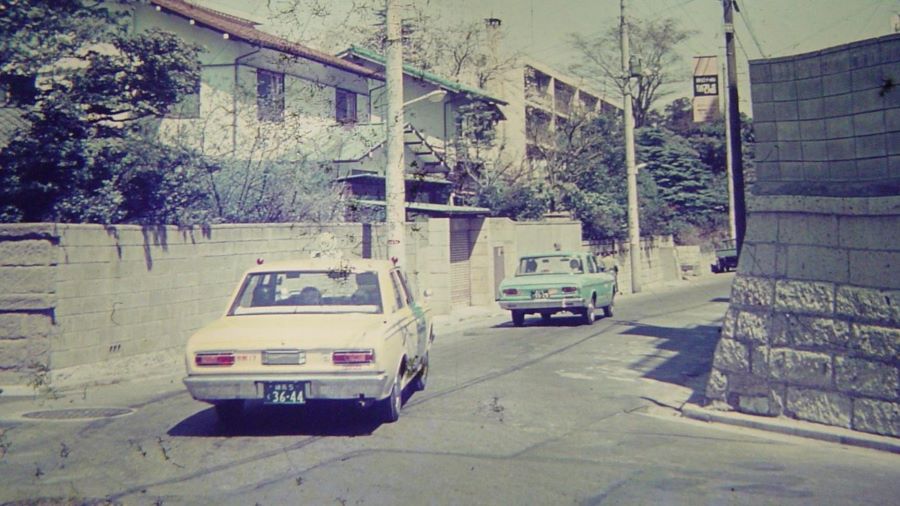
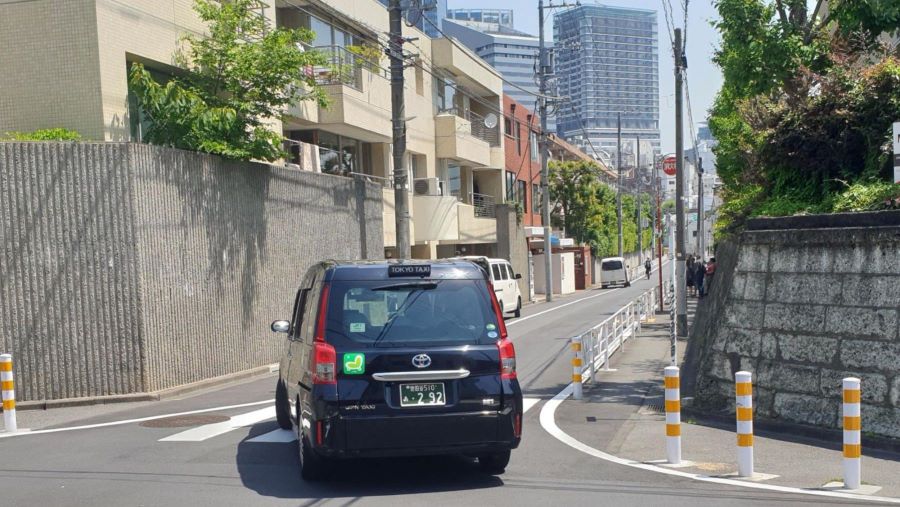
Oguras and Morishitas
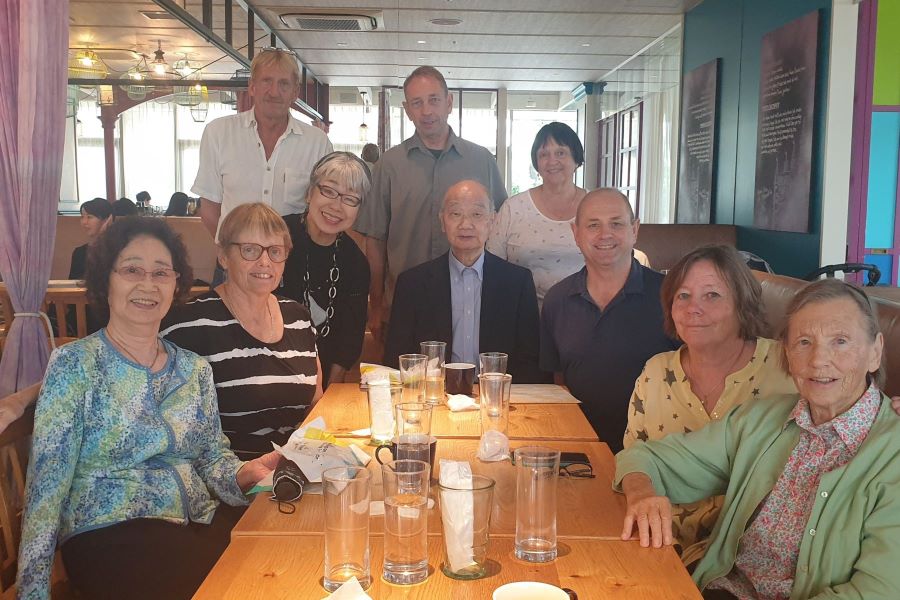
Like most expats (the colonists' word for bloody foreigners), we were lucky enough to have a maid, Ogura-san. She, and some of her extended family, became friends, leading to a wonderful visit to their family home in the countryside and encounters on subsequent visits to Japan. Sadly, Ogura-san had died relatively recently, but on this trip we were still fortunate enough to be able to visit with some of the family for lunch.
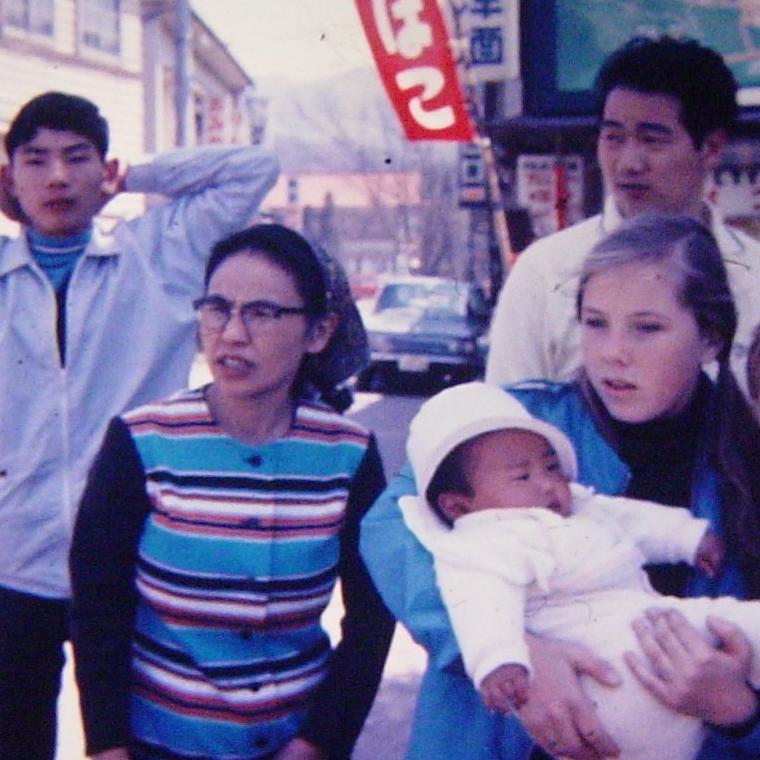
🔎click to enlarge
Language can always be an issue but between Rosemary and Mary with their Japanese skills, the Oguras and Morishitas with their English, and much smiling, pointing and goodwill, we had a delightful lunch. Hiroshi Morishita surprised us with an old photo album recording our countryside visit.
It was a feature of this trip that so much that could go wrong, didn't. Each occassion we planned, and thought we would enjoy, still managed to exceed expectations. This lunch was not an exception. Travelling was not supposed to go this well.
Nishimachi
One of our excursions while we were in Tokyo was to revisit Nishimachi, the school my sisters and I attended (Doug attended another school, St. Mary's). The school had changed significantly, grown really. When we attended it was comprised mainly of a single house, the Matsukata residence, that had formed the basis of the school when it was established after the Second World War.
For me it was not just the school grounds that held good memories, but also the surrounding area of Azabu which, to some extent, was an extended playground and again emphasised the safety and freedom that Tokyo provided fifty five years ago. I recall playing in a vacant lot with the ruins of a demolished house; walking to the shops to buy sweets or hot nikuman (steamed pork buns) on cold days with my transport money; and generally wandering the streets and parks with the Tokyo Tower as my guide.
My sisters perhaps were not able to be so carefree. In particular I recall how they were burdened with homework, literally, as they would drag bags loaded with thick, hardback textbooks home for hours of study whereas either I had no or little homework or the consequences for not completing it were not memorable. Despite their academic burdens, my sisters made good friends in those years and have participated in reunions for which their classmates would travel from all parts of the world. Perhaps because of my age at the time, I have not retained friendships. I floated through school a bit and, I suspect like my brother, occasionally got into trouble in ways that, without malice or significant seriousness, did not bring down the most serious of punishments.
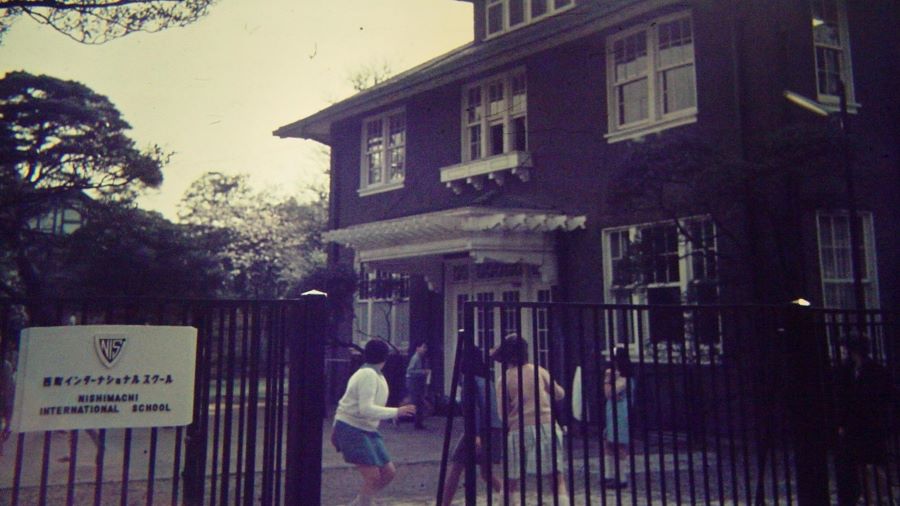
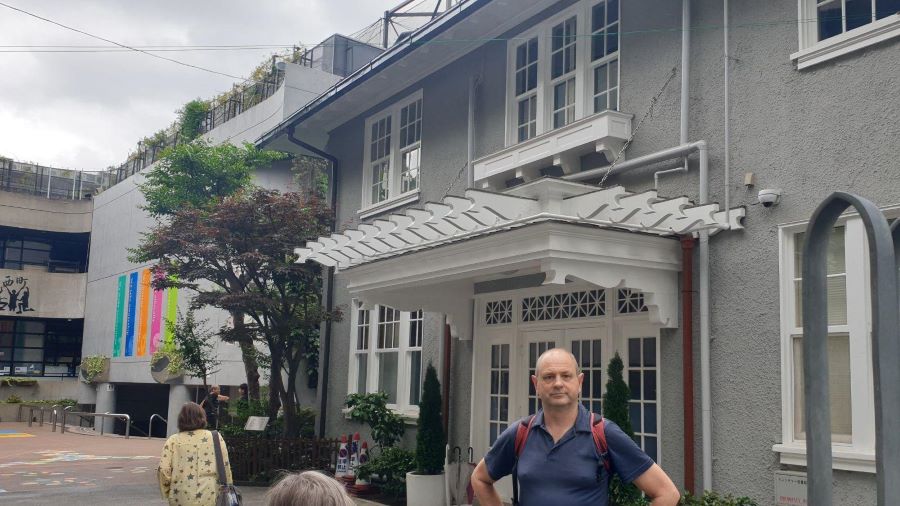
Ogawa Sensei
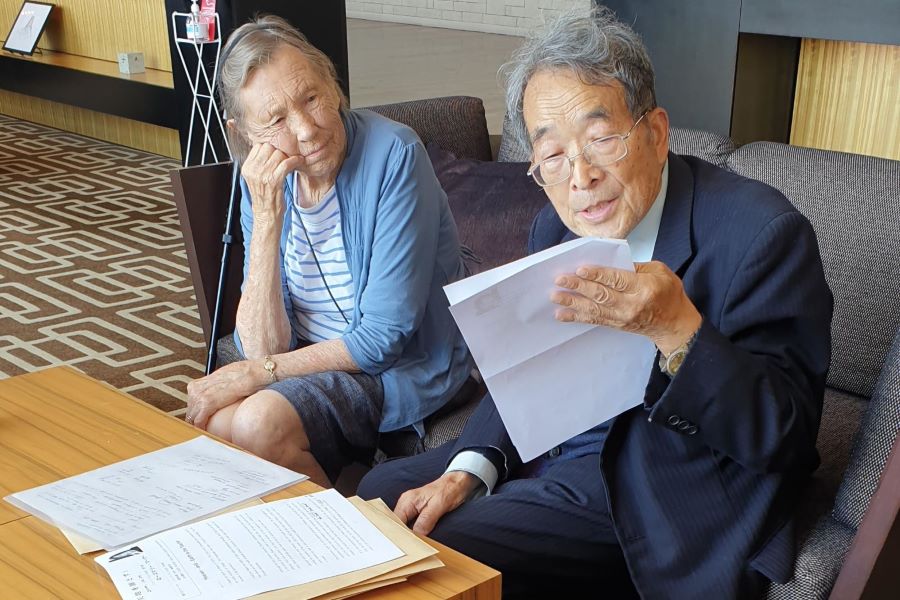
Like meeting with the Ogura and Morishita families, and Anne and I meeting with our Tokyo friends Chizuko and Toshi, one of the highlights of our Tokyo stay was the meeting at our hotel with Ogawa Sensei, one of the leading Baien scholars in Japan.
Rosemary's relationship with Ogawa Sensei went back to the early times of her study of Miura Baien. Rosemary and I had met with him and other members of the Baien Gakkai in their Tokyo office space, windows obscured with piles of books and papers, when we visited together in 2016. I was treated to dinner by him when I arrived for a hike in 2018, where, with his generous English, my miniscule Japanese and a useful piece of paper on which he wrote kanji while explaining their significance, we discussed Buddhist concepts of nothingness.
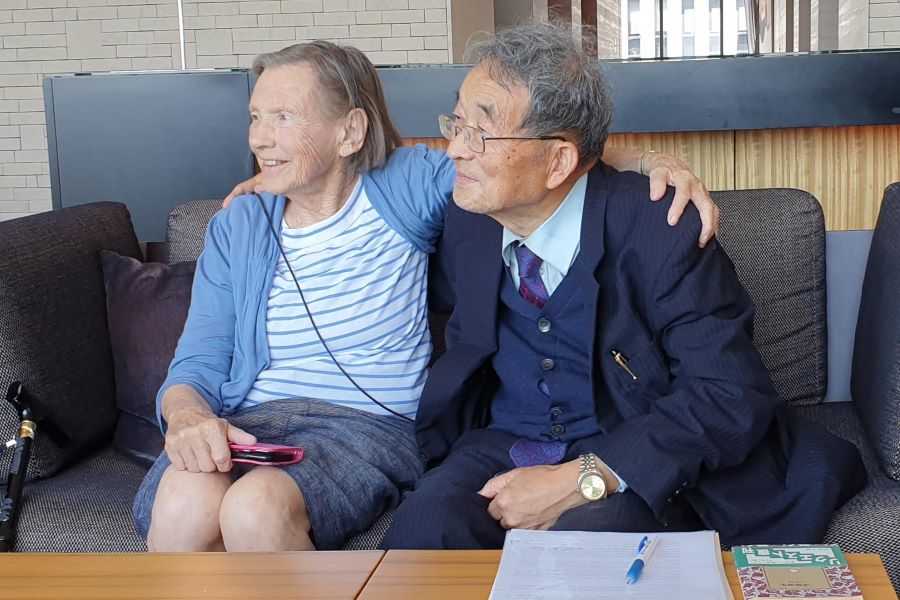
The visit with Ogawa Sensei was the first stage in a principal objective of our trip, for us children to experience the philosophical community Rosemary had entered when she embarked on her study of Baien. Mary, with her extended stays in Japan previously, was more familiar with this community but for the rest of us, apart from my brief encounters, the Baien community was something we heard much about but did not, ourselves, know firsthand.
It was such a pleasure to be able to meet with Ogawa Sensei with my family 🎥 as we knew the important place that he and other Baien scholars had held in Rosemary's life.
Overall, there was also something extremely satisfying, even at this stage of my life, or perhaps because of the elapsed time, about revisiting Tokyo with my whole family. Each of us had previously returned to Tokyo at different times and for different purposes, but to be there with all of of us, except my father of course, allowed for a shared nostalgia that was deeper and more meaningful. It is an almost inevitable consequence of family that, no matter what directions the lives of individual family members might take, it is only them who were witness to most of the seemingly mundane but still formative parts of your life. Reflecting together on the past, and listening to my family's stories while standing in the locations where they unfolded, I was able to flesh out and colour the sketch created by my own limited memory.
Excursions in Tokyo
Only part of our time was spent in Tokyo together and, much like we had done fifty five years earlier, we also ventured around Tokyo in spearate groups, coming together when desired but also exploring on our own.
Kamakura
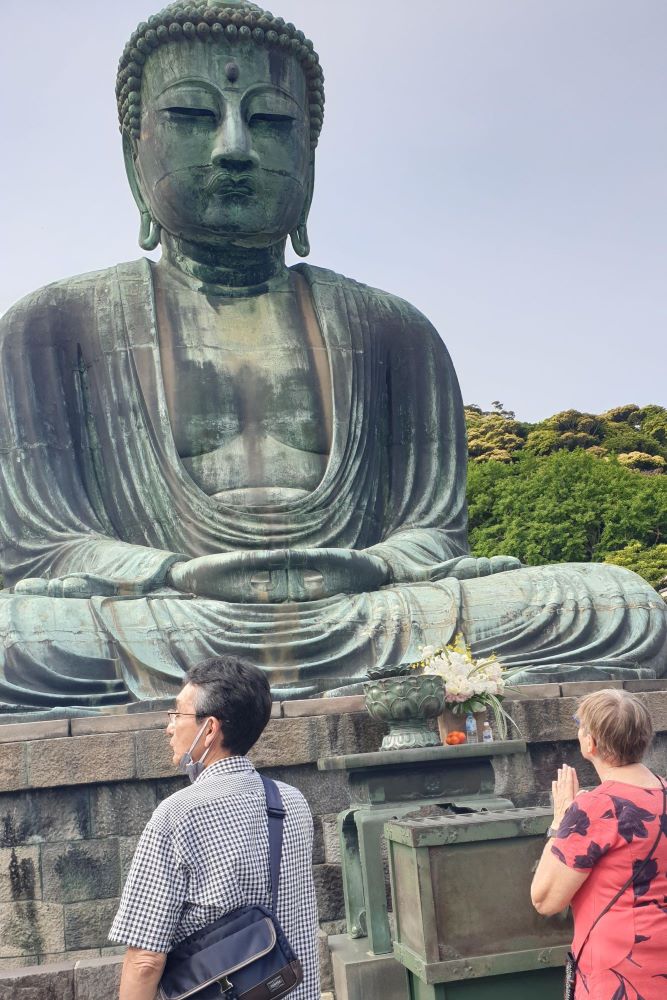
🙏
Kamakura was less than an hour away by train. Stopping at the station before Kamakura proper enabled a walk over the hills, past temples and shrines and old houses set back from the track amongst the bamboo and trees and then, after a steep descent, a short walk to the Daibutsu at Kotoku-in. The trip back through Kamakura township also felt like a walk in a different time, except that kombucha was now available in a trendy café housed in an old style building.
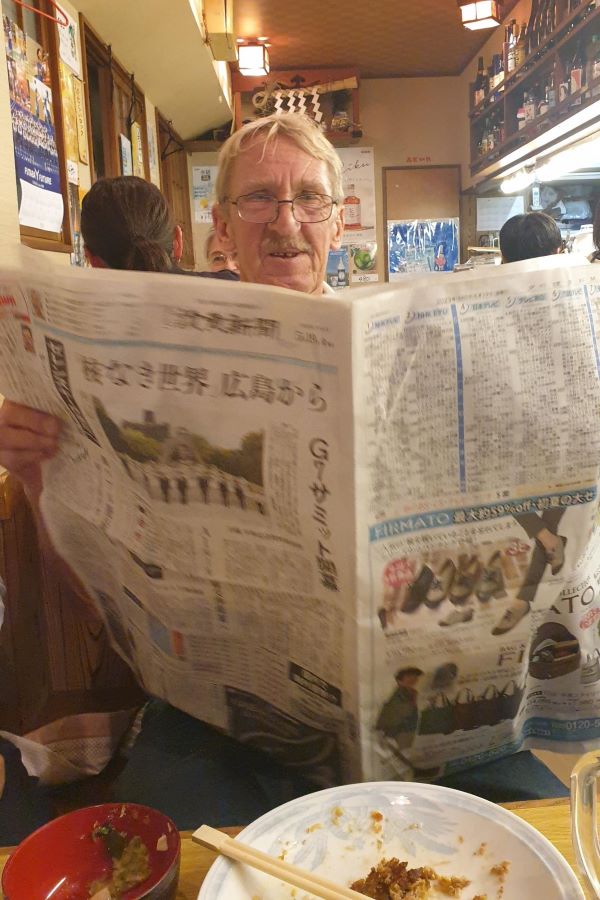
Hokusai
We all visited the Hokusai museum filled with the history of the artist's life and original works, including fascinating sketchbooks. It was easy to see Hokusai's influence on western artists such as try-hards like Van Gogh and, more importantly, Hergé and his bringing into being of Tintin and Snowy.
Meiji Jingu
After a disappointing reacquaintance with Kiddyland, a favourite shop in my youth that now, like the department stores, is largely just a front for popular brands, equanimity was restored with a stroll along the magnificent pathways of Meiji Jingu. I could recall crowds along these tree lined, wide avenues so large that traffic control was required. As a child I was also shameless in using the 'small and blonde' card to weasel my way to the front of the crowd for a better view. The cultural highlight for me then was a plate of yakisoba, my favourite fast food.
Food
Good food is very abundant in Tokyo as you would expect. Our hotel was in a business precinct that had good places for breakfast but only a few dinner choices. But, as for anywhere in Japan, we just had to head towards the railway station to find izakayas, curry houses and so forth.
Views
In 2018 I started my attempt on the Tokai Shizen Hodo at Mt Takao learning, in the process, that this mountain on the fringe of Tokyo's suburbs provided magnificent views over Tokyo and the surrounding countryside. We all went there together this time, riding the cable car up rather than labouriously climbing the road as I had done in 2018 out of some misguided sense of hiking purity.
In the concrete forest of the streets and the winding subway halls of Tokyo it is easy to forget that there is anything out there in Japan other than this seemingly endless city. And then suddenly, from your hotel window, you wake up to see Fujisan and you can instantly picture Hokusai reaching for his sketchbook. Like Wellington, there is nothing like Tokyo on a good day.
Tokyo Tower was a landmark for us fifty five years ago, It was built, no doubt, to boast about Japanese engineering prowess and to facilitate the innovations in television and other broadcasting as Japan made its way back from the devastation of the Second World War. Situated in Azabu, its viewing decks provided us with a view over Nishimachi school and also the American Club where us children happily swam, bowled, ate hamburgers and watched movies without thought of the likely eye-watering cost of behaving like we were in California rather than Tokyo.
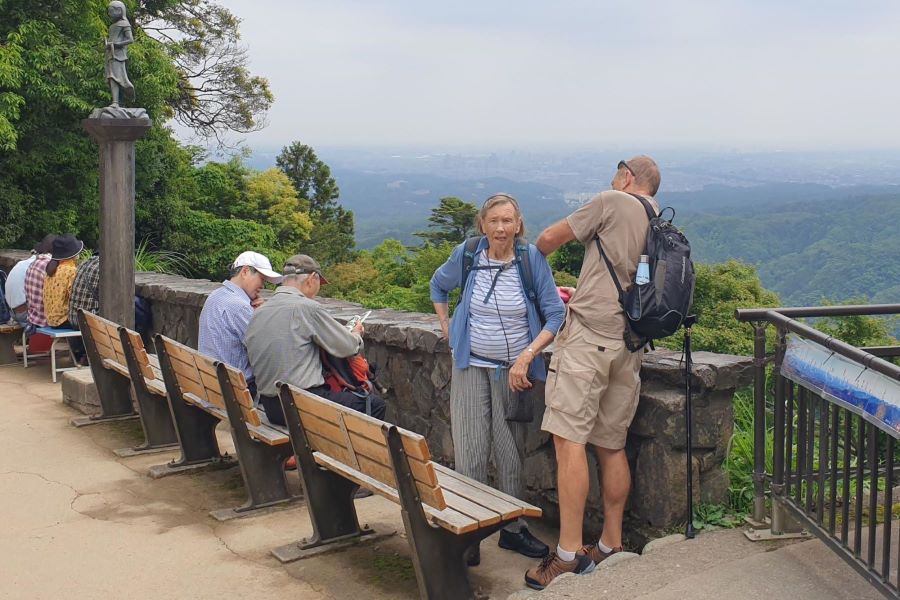
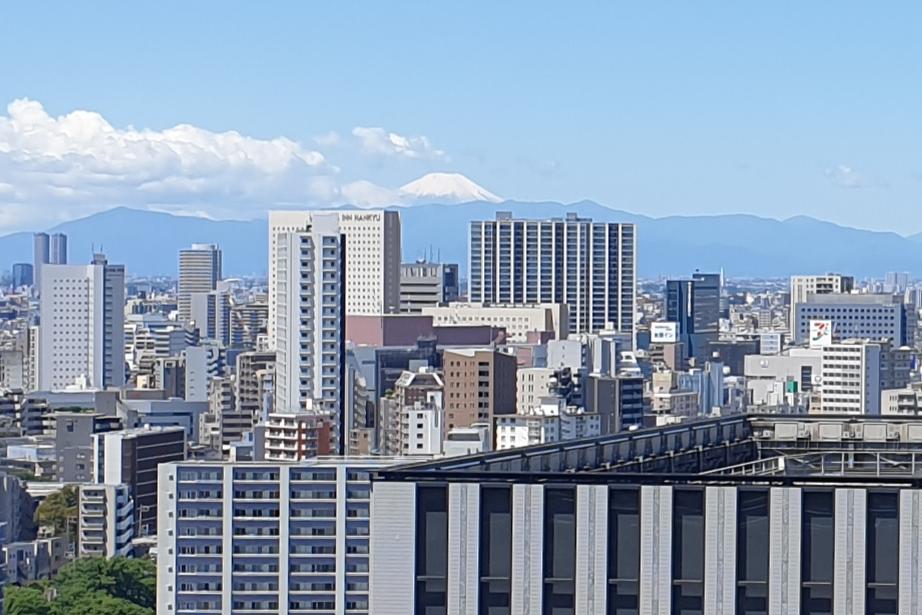
Kurashiki to Kyushu
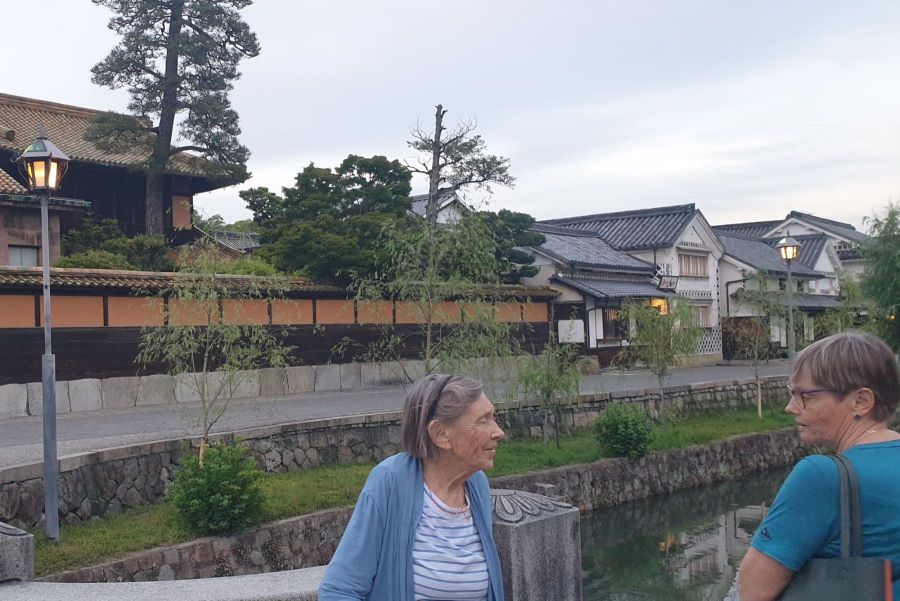
After Tokyo we headed south towards Kyushu on the Shinkansen, saying goodbye to Mary and Rick who headed off for their European excursion. We had ridden the Bullet Train in the 1970s, its nose cone more bullet like then instead of the kingfisher's beak it now resembles.
To break the journey, we stopped in the scenic town of Kurashiki. Our hotel came with a High Tea with delicious, sweet treats on layered tea stands. The hotel was also within easy walking distance of the preserved merchant town consisting of old style buildings and canals. There was also a temple on a hill that we could see from the hotel.
The next stage was a short train ride back to the station in Okayama to catch a Shinkansen to Kokura station, just across the strait on the island of Kyushu, and then by express train to the city of Oita.
The next morning Doug and I walked to Oita station and picked up a rental car and we drove back to the hotel to pick up the others. Despite several trips as an adult, including a one year stint in Tokyo, this was the first time I had ever driven a car in Japan. Most places in Japan are easily accessible by public transport, but we were soon to drive up in to the hills to Baien's birthplace where, for once, trains and buses were not going to cut it. With five of us, a car was the best option.
Baien Revisited
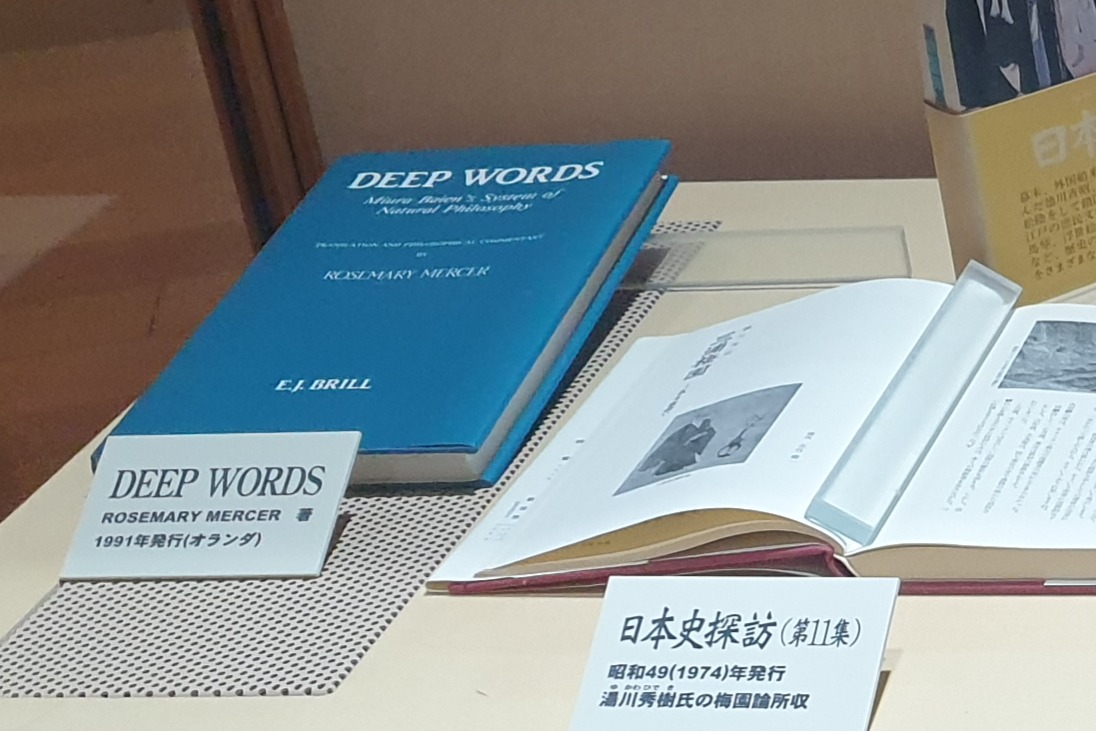
We knew that members of the Baien Society were expecting us at the Baien museum, located in a small settlement along the Futago river and not far from the city of Kunasaki, and that we had a night booked in some chalet style accommodation nearby, but other than that we were unsure what was organised for this part of our trip. As it turned out, we could not have envisioned a better visit, let alone planned one.
We were met in the driveway of the museum by one of the members of the Baien Society and given a tour of the small museum. I was surprised and moved to see that Rosemary's book, Deep Words, that came out of her doctorate, was encased on display with other texts. There was also a film room where a video was on loop that also included Rosemary, resplendent in a 1980s hairstyle.
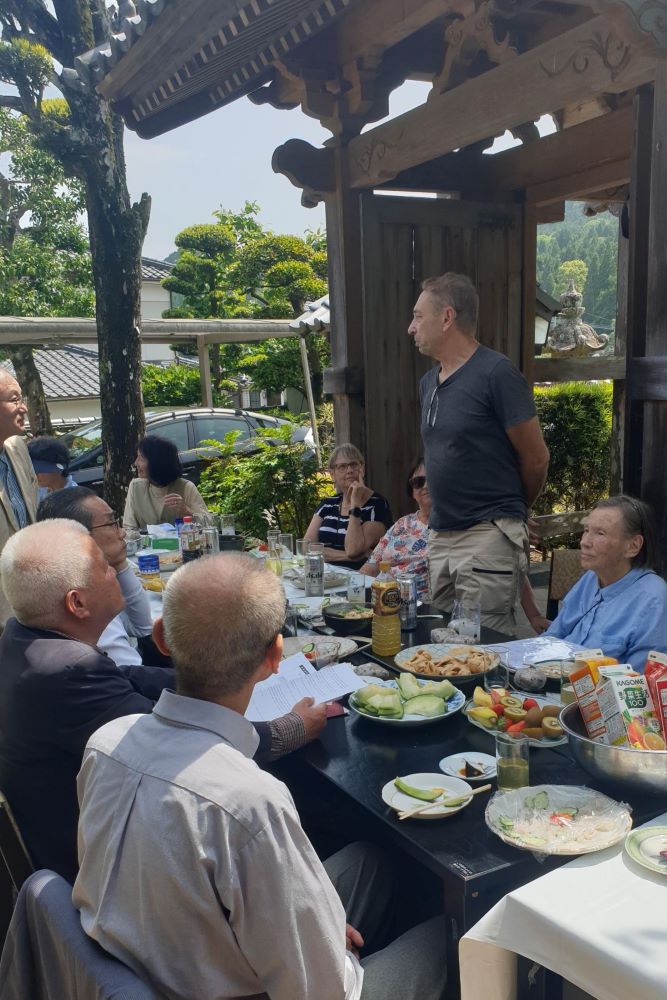
After a thorough look at the museum, we were invited to follow the others by car a short way down the valley. This village, like so many in Japan, was on the banks and the surrounding slopes of a river, crossed by small bridges here and there. Our destination turned out to be a Buddhist temple, complete with impressive gate and giant bell. We met the resident keeper of the temple, who lived with his wife in the adjacent house, and had a look around inside and learned that regular chanting services were held there. The real treat, however, was just outside.
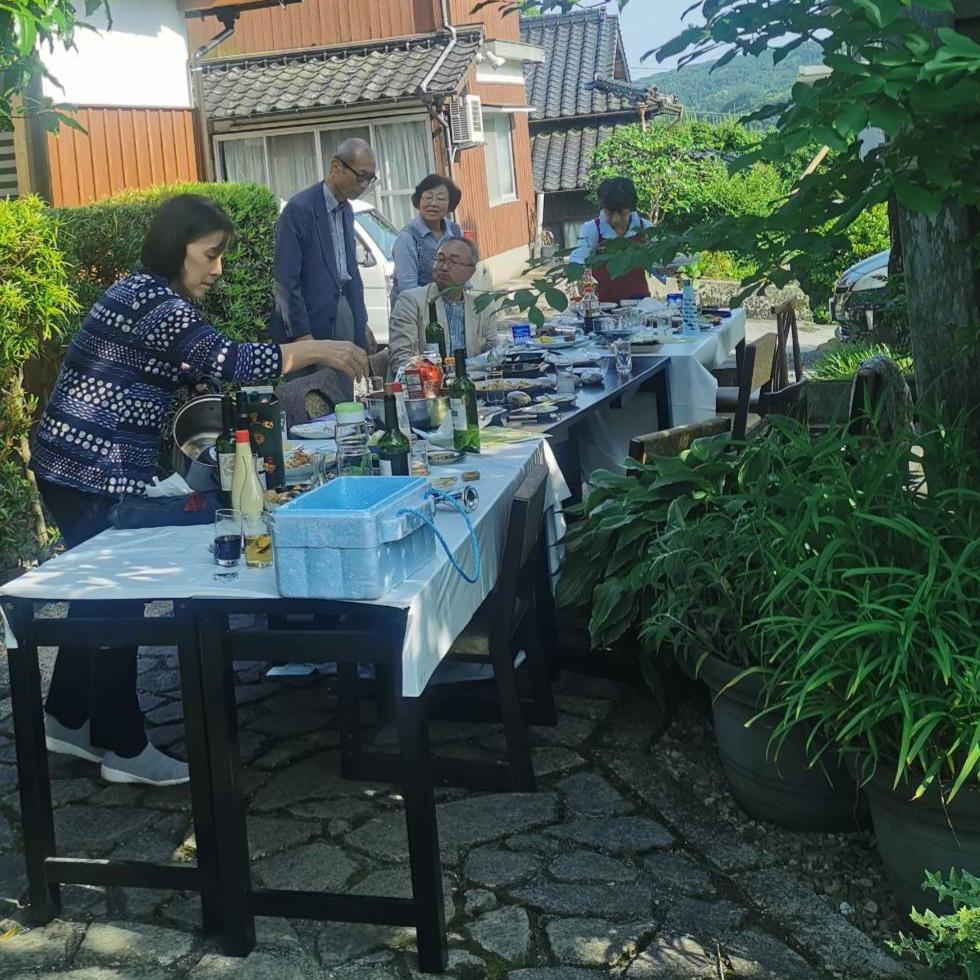
Tables had been set up end to end that were draped in white cloths and covered with bowls and plates of food, including mushrooms grown and fish caught locally. There was also no shortage of drink. In total there was a dozen and half of us or so, initially just our family and the men, but we were soon joined by the women who had prepared and presented the food.
Absent having Mary as our regular translator, conversation was managed with what Japanese we had, many hand gestures but also, gratefully, through one or more of their party who spoke English well. It is hard to describe just how pleasant all this was. Social occasions, especially in a formal country like Japan, can be difficult, but this was not at all. It was relaxed, growing more so as the bottles and cans were drained, and was as convivial as any lunch or banquet in the countryside of Provence or Tuscany.
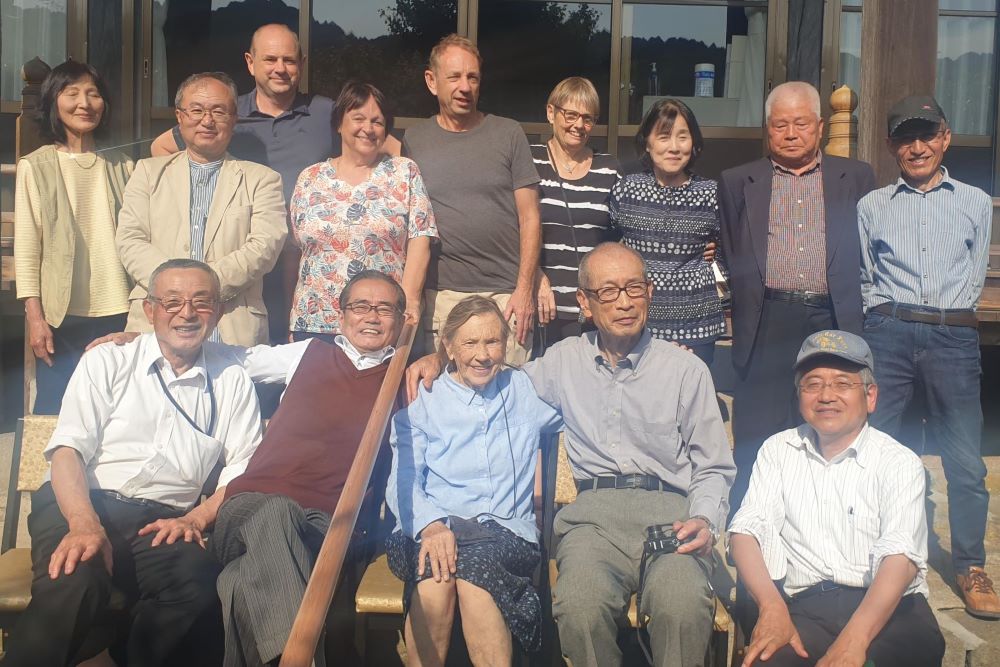
At the appropriate time, Rosemary presented a speech in Japanese. This was followed by Doug with a pepeha 🎥 and then, one by one, each of our family stood and spoke. This was followed by all of our hosts each taking their turn to speak and completed with a very moving poem, intoned rhythmically in the Japanese style by Hamada Sensei. The lunch was brought to a conclusion with our ringing of the temple bell 🎥 and group photos. (If you notice a romantic, misty effect in some of these photos, you might like to know it has been achieved by the 'forget to clean the lens' technique 🤦)
Our mission had been completed. Rosemary had shown us in a most affecting way the people and teh place behind her years of study of Baien. It was a delight to meet them all and what child could not be moved to pride by seeing their mother honoured like this? Looking now at the group photos taken at the end, I can see that the smiles are not just for the camera but come from the sense of shared enjoyment of good food, a few drinks and a sunny afternoon in good company. An unforgettable experience.
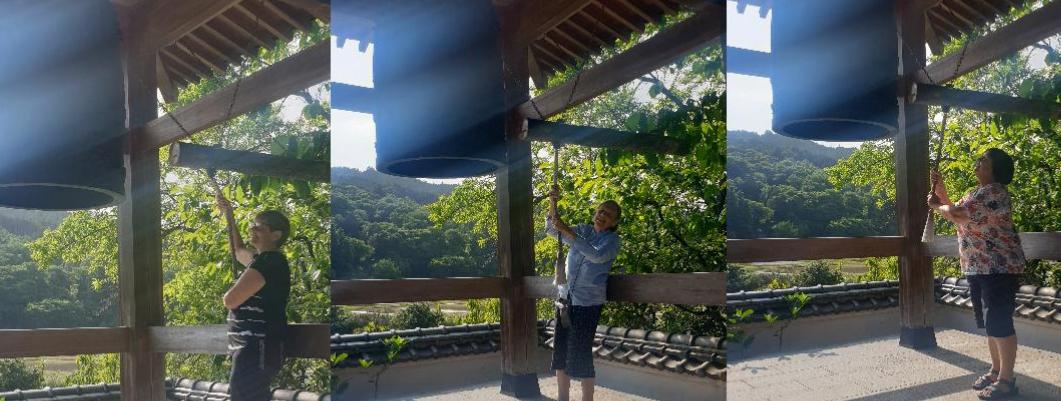
Return to Miyajima
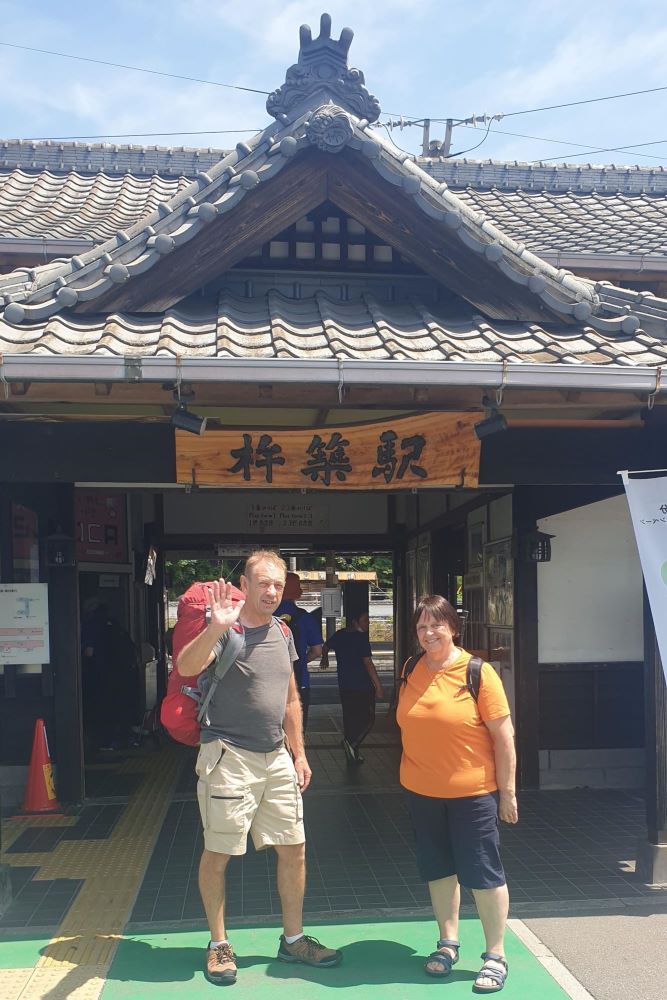
The next day we said goodbye at a cute country railway station to Doug and Gabrielle who were headed to Kyoto for sightseeing before they returned to Tokyo to travel on to Europe. The remaining three of us, Rosemary, Anne and I, set off by car to visit Nagasaki. The drive was spectacular as it took us through the mountains of a national park. The roads were inevitably small and winding, and the speed limit of 50kph inevitably ignored, by me as well as, it seemed, all other drivers. I thoroughly enjoyed my driving experience in Japan. Very civil and organised, of course. I only ran one red light and learned to back into car parks, much more sensible in my view than the lazy nose in first way we do it at home.
We dropped the car near Nagasaki airport and bussed into the city where I had tried my hand at travel agenting, resulting in a windowless apartment we couldn't gain access to without difficulty and surrounded by an almost unique, for Japan, absence of places to eat.
Then it was one slow and one fast train to Hiroshima for a couple of nights. In Hiroshima Anne and I took the tram to a ferry wharf and then a ferry that took us across the bay to Miyajima. We climbed a few hundred meters up the hill behind the main shrine and in the process shed nearly all the other tourists, leaving us free to walk the track amongst the trees and eat ramen in a small pavilion.
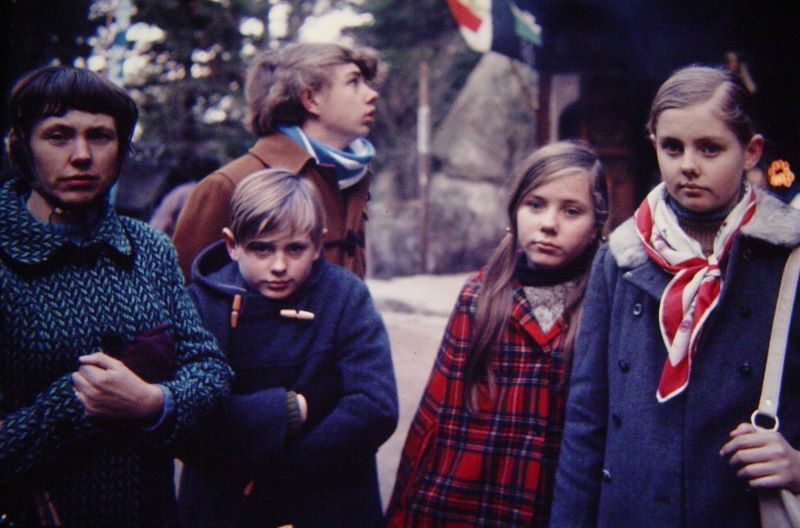
🔎
This was not our first trip to the island. On New Year's Eve 1970, as a family, we had taken the same ferry and then climbed to the top of the hill. Then, the climb was in the dark and with the multitudes who were there to see the sun dawn on the first day of 1971. It was dark and cold and I have no recollection of the actual sunrise itself. Old photos reveal that there were likely hot noodles after the climb (could we dream, yakisoba?), and a dazzling array of 1970s' style coats and capes.
Here in 2023, in the spring warmth and in daylight, Anne and I saw deer and beautiful gardens, statues and small arched bridges. We also discovered a pagoda style Buddhist temple, Daishoin, that, to my delight, was decked out in the Tibetan tradition. We climbed tiny staircases to a room at the top where one could sit on the tatami, contemplate emptiness or, more likely, look out at the beautiful views across the wrap around balconies.
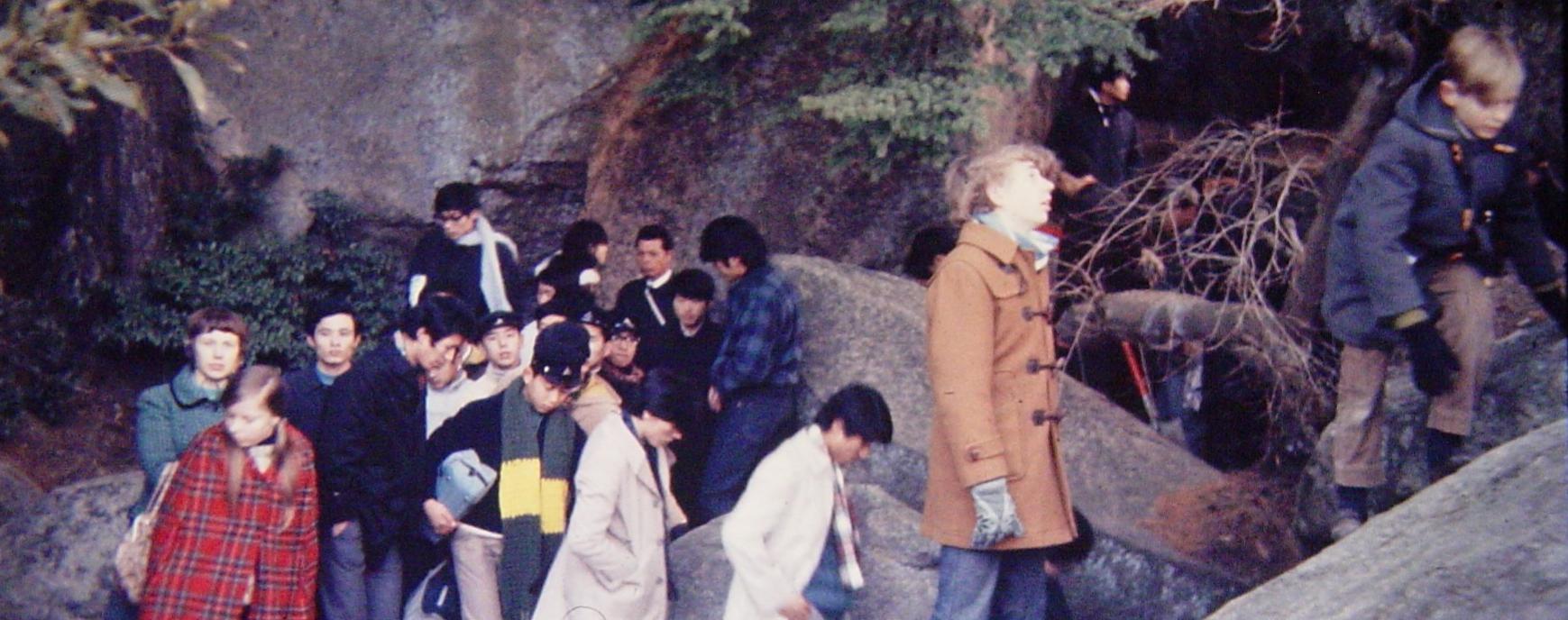
No water or backpacks - how did we survive?
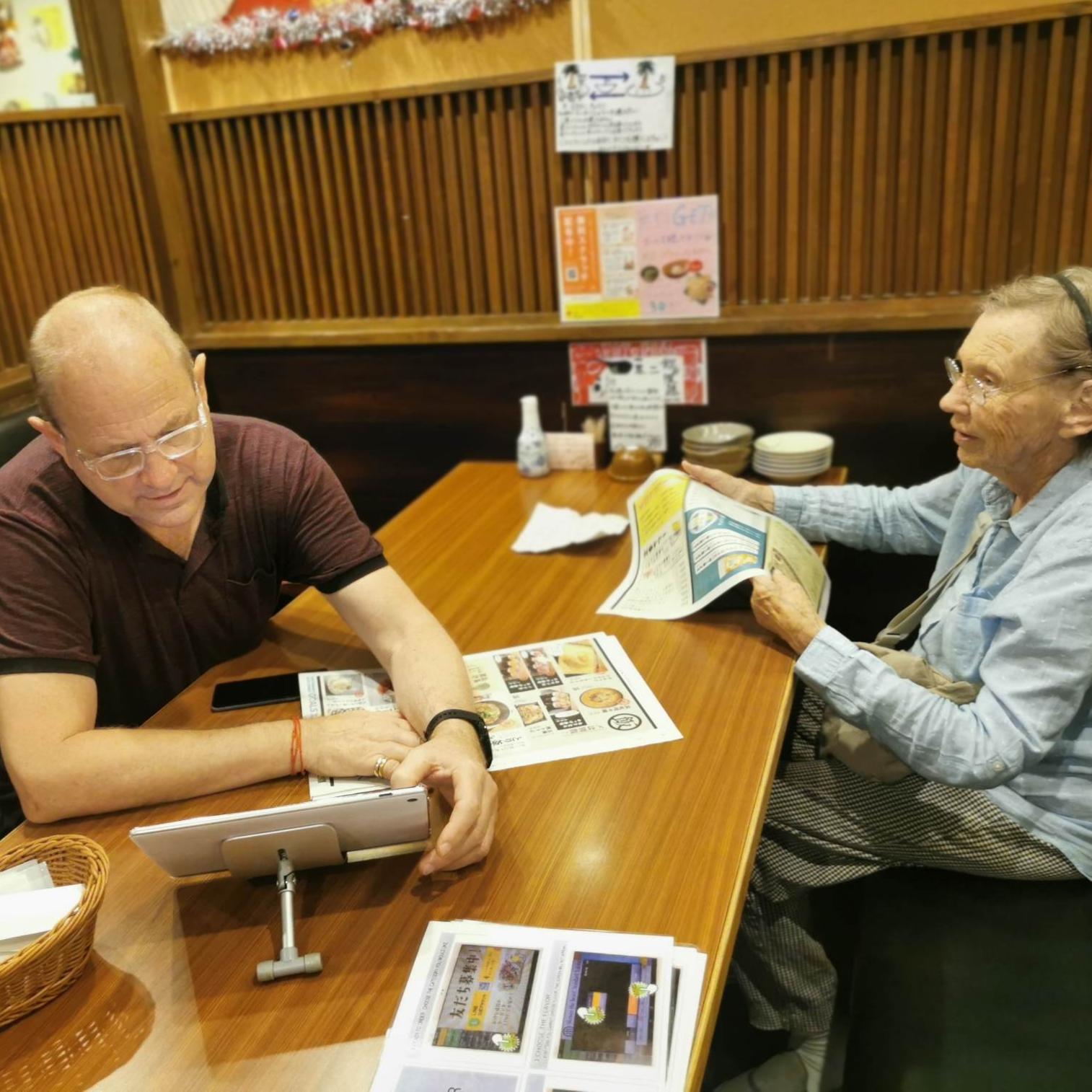
🔎
We took a boat all the way back to the Peace Dome (i.e. the blown to pieces dome we are all familiar with) which took us up the Motoyasu river past the suburbs and inner city of Hiroshima. The boat docked near our hotel, we collected Rosemary and went out to find an okonomiyaki restaurant. Social media has resulted, it seems, in certain restaurants being a must for visitors. Our restaurant was not one of those. It was down a mall and up on the second floor and lacked the queues that I had seen outside the 'in' okonomiyaki restaurant, only metres away, each time we had passed previously. I'm sure the food we had was just as good, if not better, and, most certainly, better priced. Culinary exploration also took us down to a basement izakaya with steep steps and the now ubiquitous ordering from a tablet at your table.
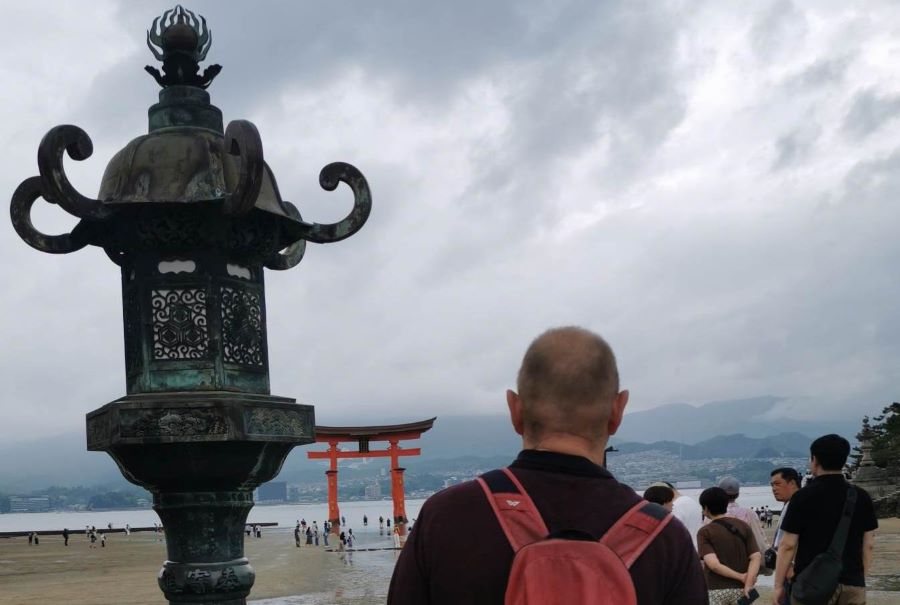
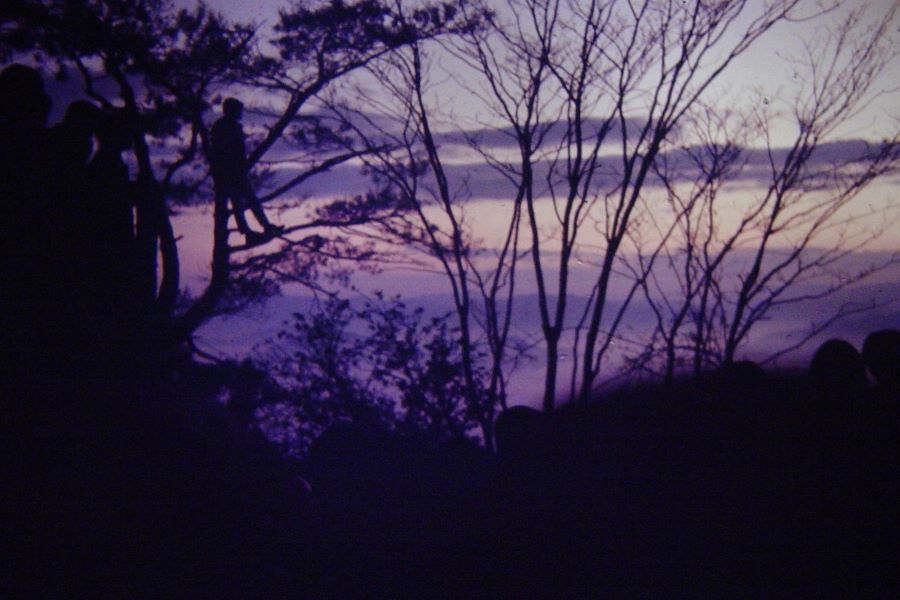
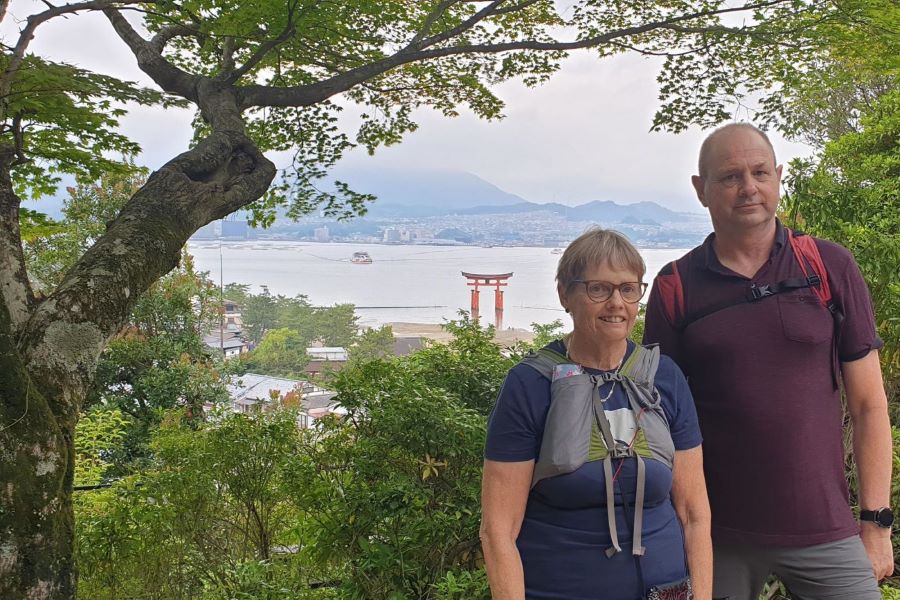
It's over, for now
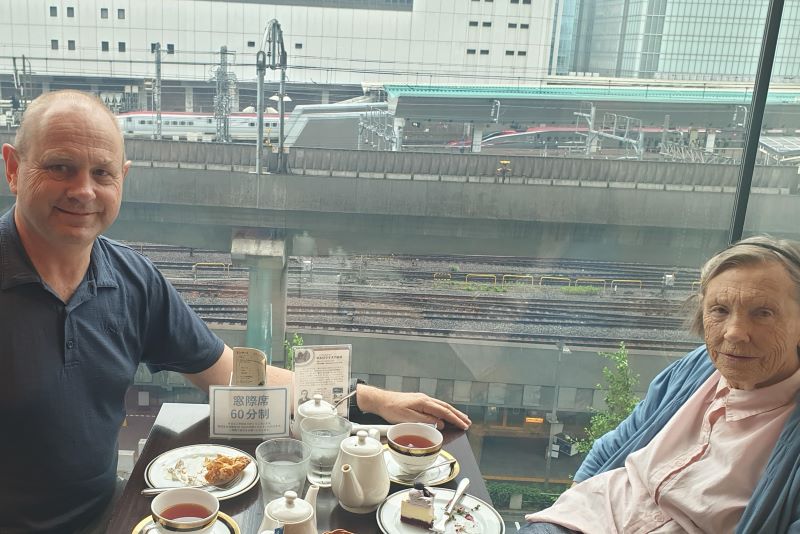
After Hiroshima the three of us returned to Tokyo by Shinkansen, staying in a hotel near Shinjuku Station. It was an APA chain hotel, which all seem to have the feature of a Japanese style bathhouse on one of their floors. A feature I am always very happy to take advantage of. More Tokyo sightseeing ensued. We had lovely drinks with our friends Chizuko and Toshi. There was a trip to Maruzen bookstore at Tokyo Station and, soon, it was time to board the plane to return to New Zealand.
It is an important part of travel to be able to cope with disappointment. I feel that our family are good travellers and we have mastered this skill to a reasonable degree but, on this trip, it was completely redundant. Everything, or at least everything important, seemed to turn out better than we could have possibly expected. Truly. A most satisfying trip providing satisfying memories. But, as we all know, satisfaction in life is only ever temporary, and in a a short twelve months Rosemary and I would return, this time with the island of Shikoku as our mission.
